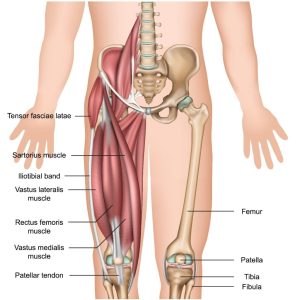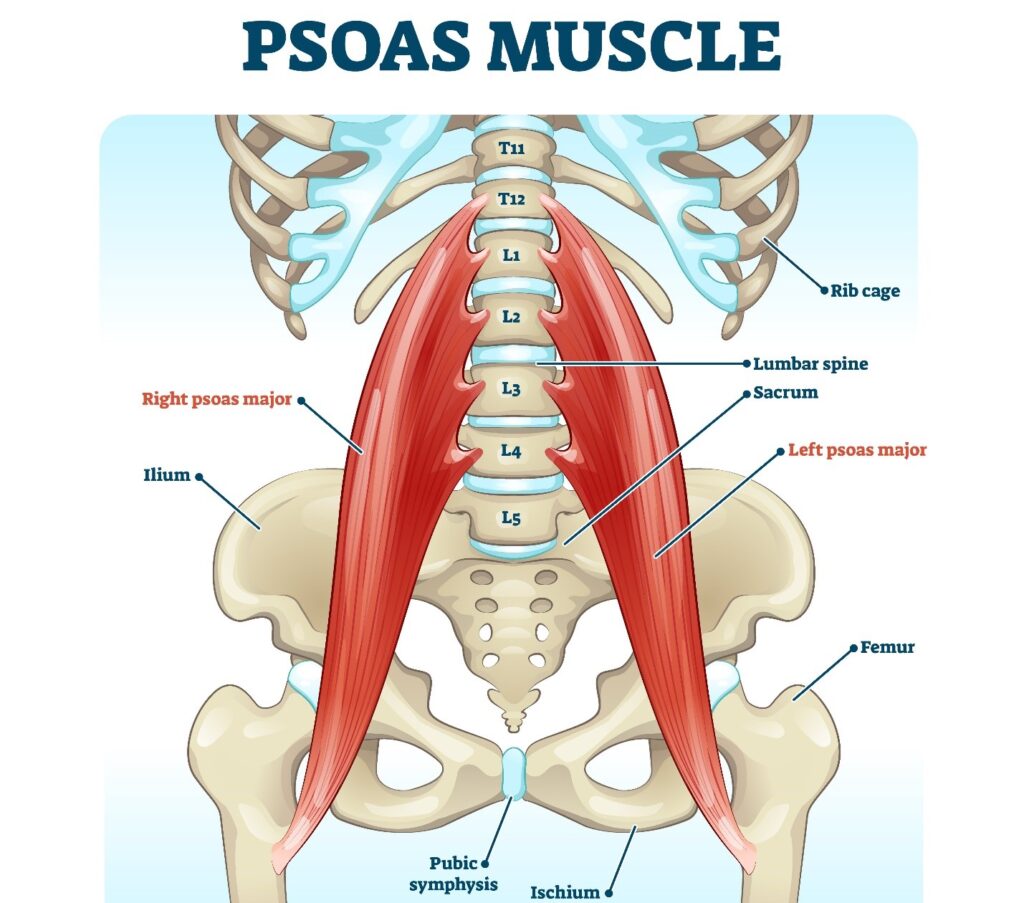For both athletes and non-athletes, hip flexors are among the most injured regions of the body. Unfortunately, they also happen to be among the most neglected muscle groups during exercise.

Yet, interestingly, the hip flexors play several vital roles in athletic performance and general day-to-day activities. Even though these muscles tend to be almost ignored, they maintain an important purpose in preventing other injuries and improving overall physiological health.
In what follows, we’ll define the hip flexor muscles, their roles in physiology and movement, and why they are so important to physiological health and performance. We’ll also touch on hip flexor injuries, their causes, and what can be done to treat these injuries and prevent them.
Hip Flexors
Defined as a group of synergistic muscles located toward the front of the hip, hip flexors primarily aid in the fluid movement and flexion of the hip and knee while also providing balance and posture to the pelvis.
Comprising several muscles, the hip flexors include five major muscle groups, otherwise known as prime movers and synergists for hip flexion. The two prime movers are the psoas and iliacus muscles, and the three synergists are the rectus femoris, pectineus, and sartorius muscles.

Psoas Muscle
Extending through the pelvis all the way to the femur, the primary function of the psoas muscle is to contract during hip flexion, allowing the upper legs to lift towards to upper body.
Iliacus Muscle
Anatomically proximal to the psoas muscle, the iliacus muscle allows for muscle flexion and rotation of the femur. Its primary function is to aid in the postural alignment of the spine such that the entirety of the body maintains proper posture.
Rectus Femoris
Performing two major functions of the quadriceps and hips, the rectus femoris runs down the entirety of the thigh and aids in the function of hip flexion and knee extension.
The rectus femoris is also the most commonly injured hip flexor muscle, responsible for over half of all hip flexor injuries.
Pectineus
The pectineus is located in the inner thigh and primarily promotes general balance and spinal alignment for postural purposes. Its main function as a hip flexor muscle is to aid in the adduction of the thigh.
Sartorius
Notably, the longest muscle in the body spanning through the hip and knee joints, the sartorius, too, functions as a hip flexor while also allowing for external rotation of the leg and adduction of the thigh.
Hip Flexor Injuries
Like most injuries, hip flexor injuries can range from mild to severe and will be more likely with specific activities or sports. The hip flexors are often the easiest regions of the body to injure, especially in kicking sports.
At its most mild, hip flexor issues can occur secondary to long days spent sitting, which leads to general stiffness and tightness throughout these muscles. At its most severe, however, hip flexor injuries can be the result of traumatic events in competitive sport or from general overuse in certain activities, ultimately causing strains, tears, tendon injury, or bursitis.
The most common symptoms involved with hip flexor injuries include groin pain, hip pain, and back pain, as well as swelling in the area of the injury.
While prevention is the best medicine, physiotherapy is an excellent solution for those who’ve already suffered such an injury.
During such a regimen, a physiotherapist is likely to initiate the treatment with a knee and hip assessment to understand its existing mechanics and identify where to improve, whether via mobility exercises, strength exercises, or both. Other types of physiotherapy can include soft tissue mobilization, electrotherapy, or cryotherapy.
Other potential hip flexor injury treatment regimens may include over-the-counter medication, home remedies such as contrast therapy, and stretching. With some injuries, surgery to repair the injury may be necessary.
The Importance of Hip Flexors
Evident in the particular location of these muscles, the hip flexors are of primary importance in the natural movement and flexion of the hip and knee while also providing balance, stability, and steady posture throughout.

Similar to that of the core, the hip flexors, when fully functioning, work to protect the lower back and spine from injury. A clear method to avoid lower back pain is to avoid hip flexor injuries.
Critical elements of the simple acts of walking, running, bending, and squatting, the hip flexors allow for optimal physiological function in everyday life, not to mention elite athletic performance.
It’s important to maintain good function of the hip flexors for normal activities. In addition, if you want to improve your health with exercise, improving optimal function of the hip flexors will improve overall efficiency of any exercise and help prevent many injuries.
Final Thoughts
Among the most common causes of preventable injuries and poor posture, hip flexor injuries, too, can be prevented. This can be accomplished through diligent and proactive preventative exercises that target hip mobility, knee flexion, and overall hip strength.
The importance of strong and mobile hip flexors, then, can’t be denied and must be prioritized, both for longevity purposes and athletic performance purposes.
